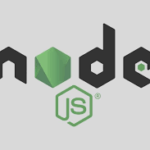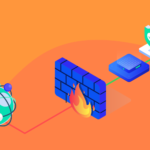It is likely that you have come here because you are looking for a Dedicated Server and you are at the point of having to choose whether to configure your disks as independent or lean towards a RAID configuration, choosing the most optimal option. If you are just curious, welcome! At WNPower we are fans of hardware and servers, and we will teach you the differences between the most used configurations. Let’s review a little what it’s about.
What does RAID mean?
RAID stands for “Redundant Array of Independent Disks” and allows multiple disks to act as a single drive. RAID technology is aimed at achieving greater availability for your information and better performance for the sites or applications hosted within your server. In addition to this, the combination of several disk drives, depending on the RAID configuration we use, increases the storage capacity.
RAID uses the technique of duplication, information sharing or a combination of both, which can range from dividing the space of a physical disk drive into several smaller units that are distributed and mixed among all the disks that make up the array, to simply keeping data duplicated on one or more disks; or simply add space to a drive that you ran out of.
When we choose a configuration that offers us redundancy and distributed information, data is read from all disks at the same time, which means better performance compared to the scenario of a single disk or independent disks.
If we opt for a disk mirroring setup, it means creating an exact copy of all the data on a given disk and replicating it to another disk. Whenever there is a change, it is reflected on both disks. This ensures high redundancy, as even if there is a problem with one of the drives, your mirrored drive can pick up the load and continue functioning as if nothing had happened.
RAID configurations
Although there are more configurations than you imagine, we will tell you the most used (RAID 0, RAID 1, RAID 5 and RAID 10) and commercially adopted by equipment and infrastructure manufacturers. If you want to know more, subscribe to WNPower Academy, our Hosting University to be aware of upcoming webinars, seminars and events, online or near your city.
RAID 0
RAID 0 is the least recommended unless you have run out of space on your drive, can’t clone to a larger drive, and need to expand its capacity. If you boot to a RAID 0 from the time of deployment, the data is evenly split across the available disks and offers a little more performance, but ZERO redundancy.
At least two drives are required to set up a RAID 0 and it technically uses striping to separate your data blocks across the drives that make up the array, but… it leaves you vulnerable to data loss in the event that one of the drives fails. disks fail.
If you are going to opt for RAID 0, you better do it in a test scenario and in the short term.
Capacity: Size = HDD1 + HDD2 + HDDx
RAID 1
RAID 1 offers you disk mirroring, that is, replicating data from one disk to another so that if one fails, your server and applications can continue working. Here we already started talking about redundancy. Read performance is also improved as both disks can read at the same time, while write performance is the same as the single disk storage scenario. At least two disks are required to duplicate data storage.
Capacity: T = (HDD1 + HDD2) /2
RAID 5
In a RAID 5 configuration data is divided evenly between the disks, and each disk contains information about what data is stored on the others. This scenario allows the array to function even if one of the drives fails. It produces good redundancy results and provides better performance, but requires at least three disk drives.
The difference between RAID 1 and RAID 5 is that the latter offers a large improvement in input/output performance.
Capacity: T = (HDD1 + HDD2 + HDDx) – HDDx
RAID 10
By setting your disks to RAID 10 your data is evenly divided among the available disk drives, and each disk has a mirrored disk. This scenario combines RAID 1 and RAID 0 (RAID 10 is basically RAID 1 + RAID 0) and offers excellent performance and redundancy. Four or more disks are required since their number must be even.
Use a RAID 10 scheme if you are going to work with databases or applications that require very high performance.
Capacity: T = (HDD1 + HDD2 + HDD3 + HDD4) / 2
RAID Types
Depending on the hardware or server you have or are purchasing, there are three ways to configure your RAID. These can be Software RAID, Fake RAID or Hardware RAID. At WNPower you will find these variants depending on the characteristics of the Dedicated Server you are going to hire.
Software RAID
In software RAID, it is the operating system that is in charge of managing the disks. This implies that our system will have to dedicate resources (CPU and system bus mainly) for RAID management and, therefore, we are taking away some performance from our server. Fortunately, with the appearance of processors with several cores, this load has been less affected.
Fake RAID
Also called “false RAID” or “hybrid RAID”, it is a type of RAID that is usually managed from the BIOS of some motherboards simulating a Hardware RAID, but with limited functionalities. This type does not usually take away system resources since the operating system does not manage anything, but we will not obtain the reliability of a Hardware RAID controller either. On a statistical level, this is the method most prone to failure and sometimes difficult to reconstruct.
Hardware RAID
In the case of hardware RAID, it is required that we have a RAID controller installed on the server. This controller is an expansion board that integrates its own CPU, memory and bus. With this we achieve full dedication by that controller to the administration process of our RAID system, completely freeing the processor of our Server. This system is included especially in high-end servers, providing reliability, security and speed necessary for any event that may occur with our disk drives.








